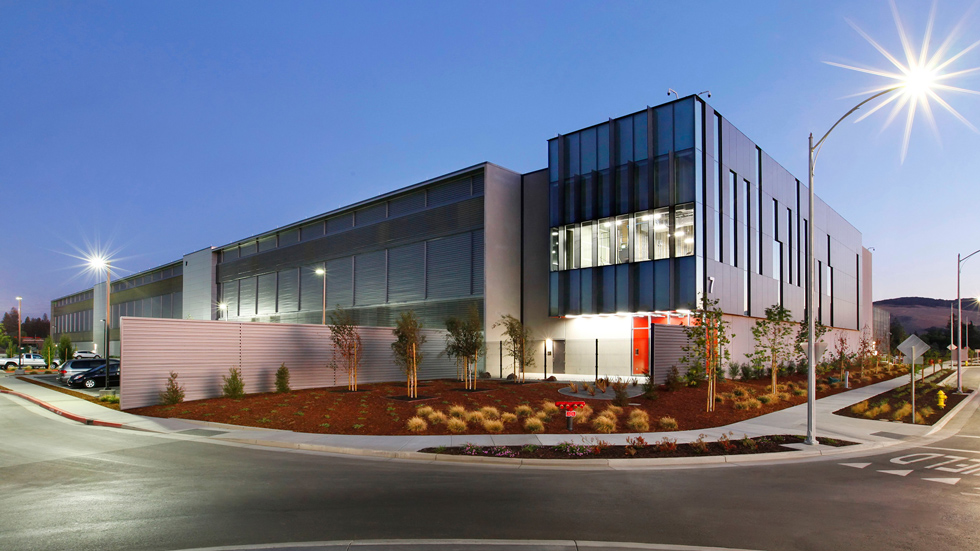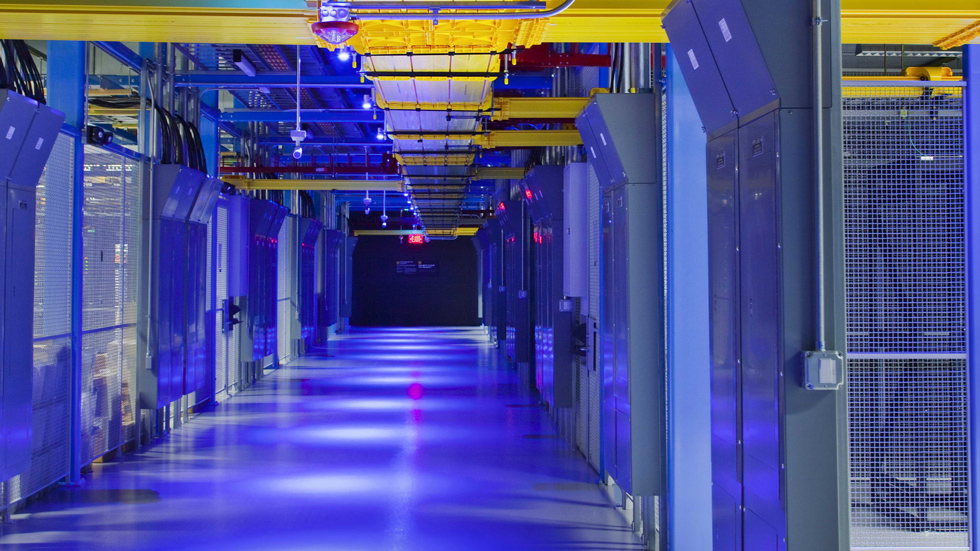Twenty-five years after its founding, Equinix, Inc.’s (Nasdaq: EQIX) original mission to create and house an efficient, powerful, network neutral infrastructure offering for all things digital remains as consistent and relevant as ever.
Today, a rising share of activity on Redwood City, California-based Equinix’s vast platform is taking place across global markets. Equinix operates 250 data centers across 71 metro areas and 32 countries, providing digital infrastructure for more than 10,000 businesses worldwide. With new projects recently announced in markets including India, Malaysia, and Indonesia, those numbers are only expected to trend higher.
Keith Taylor, Equinix’s CFO, has been with the REIT since its inception. He sees substantial growth opportunity for years to come given ongoing digitization, as companies move more and more functions onto the cloud, alongside the exponential growth potential of artificial intelligence (AI).
Whether it's mobile computing, the Internet of Things (IoT), autonomous driving, or gaming, “all things digital need a network and they need efficiency. You need performance. And that's what we've created,” he adds.
Nick Del Deo, analyst at MoffettNathanson LLC, says “Equinix is in very good shape as it celebrates its 25th anniversary.” He notes that the company’s global footprint of interconnection-oriented data centers “simply cannot be replicated,” and adds that “it’s hard to find a large participant in the broader telecom ecosystem with a better all-around story to tell than Equinix.”
Neutral focus
Equinix was founded in Silicon Valley in 1998. The company’s name was chosen to reflect its focus on EQUality, Neutrality, and Internet eXchange.
Taylor says that what sets Equinix apart is the path it decided to take from the very beginning—a time when the internet was just starting to be viewed as a tool for the consumer, rather than as a military or educational application, and data centers were generally run by large network carriers.
“The most fundamental thing we did that was different than everybody else was that we knew we wanted to be a co-location company, a multi-tenanted data center real estate company. We didn't want to own a network, we didn't want to offer managed services. We wanted to just be in the space of providing network, what we called back then network neutral data centers,” Taylor says.
Network neutral, as Taylor explains it, means “you don't own the network, but you have all the benefits of diversity as everybody populates into your environment. It was that decision that was essential to our success because today we have over 2,000 networks inside our environment.”
In August 2000, Equinix went public with just $800,000 in revenue. A major milestone followed soon after when the major, tier one network telecommunications carriers moved core routing infrastructure inside the Equinix platform in five major markets, Taylor says. “That caused a ripple effect in that tier two and tier three carriers, all those carriers that hang off those major backbones, all had to co-locate inside our environment.”
Meanwhile, financial traders had realized by 2003 that they needed to operate more electronically, Taylor says. “Again, another very important milestone because, ultimately, we became the platform for the financial systems. Everybody could come to us and not fear competition.”
The decision to convert to a REIT came in 2015, which roughly coincided with Equinix becoming the “on and off ramp to the cloud,” according to Taylor. He notes that today, over 40% of access points to cloud platforms operated by hyperscale providers such as Amazon and Google are located in Equinix data centers.
Power of partnerships
While eager to serve those hyperscale providers, Equinix knew that it didn’t want to put such a substantial investment entirely on its own balance sheet and would need to find partners.
One such partner was Singapore’s sovereign wealth fund GIC, which “had the same ideology that we had as long-term holders and value creators,” Taylor says. The deal structure is effectively a joint venture where Equinix is the general partner, but only owns 20% of the business.
As a result of that partnership, and a partnership with PGIM Real Estate in Australia, Equinix has opened 12 xScale hyperscale data centers in eight different markets representing more than 180 megawatts of capacity, with more to come. The xScale data centers offer access to Equinix's suite of interconnection and digital services and tie into the hyperscale companies' existing access points, thereby increasing the speed of connectivity to their existing and future enterprise customers.
Equinix has agreed to deploy over $8 billion of capital with GIC and PGIM across their various joint ventures, which will represent more than 800 megawatts of capacity once fully built out. “It gives you a sense of the magnitude of the opportunity, but it's minute relative to all that's going on in the broader market,” Taylor says.
Matt Niknam, analyst at Deutsche Bank, describes Equinix as a “blue chip” REIT in the data center sector and says results “continue to demonstrate the power of Equinix's global data center platform, which is not only benefitting from robust customer demand (in an increasingly supply and power constrained market), but also via incremental pricing tailwinds.”
Del Deo at MoffettNathanson echoes those views, noting that, “AI could exacerbate the issue, by introducing another source of demand into an already supply constrained market. This could present opportunities for Equinix to take price up another notch, with the attendant benefits flowing basically straight to the bottom line.”
Taylor adds that Equinix would like to do more on the joint venture front. “There are other places that we will go to because there's plenty of capital out there that wants to be put to work. We're not short of relationships, it’s about finding the right structure that makes both parties mutually happy,” Taylor says.
Global reach
Equinix today is truly a global company, with approximately 60% of revenues coming from outside the U.S. Taylor says that foreign markets are growing at a faster rate than the U.S market, “so arguably over time, unless you do an acquisition, the dollar-denominated business will become a smaller and smaller percentage. It's still going to be significant. It's still the largest, it just will become smaller because of all the other markets we're going into.”
One of those other markets is Indonesia, where Equinix partnered with PT Astra International Tbk in a joint venture to develop the country’s digital infrastructure and capitalize on new and emerging technologies, such as hybrid multicloud (a combination of public and private cloud services), 5G, IoT, AI, and more.
In 2022, Equinix announced its entry into Malaysia, which continues to grow as a strategic regional hub for digital interconnection. Equinix plans to build a new International Business Exchange (IBX®) data center in the state of Johor as well as a data center in Kuala Lumpur. Equinix has also announced plans to enter the South African market. Meanwhile, Equinix recently announced a $42 million investment for its fourth IBX® data center in India, where the digital economy is expected to reach $1 trillion by 2026.
Notably, Taylor says, 65% of Equinix’s revenues come from customers that are deployed in all three regions of the world: the Americas; Europe, the Middle East, and Africa; and Asia Pacific. Furthermore, these customers are also asset diverse. He points out that Equinix’s top 10 customers are deployed on average in more than 80 different data centers. Additionally, Equinix’s quarterly bookings span more than 4,000 deals with more than 3,000 customers. “That’s not small stuff,” he says.
Being present in international markets is important for Equinix not only because the world has become increasingly more connected, Taylor says, but also because local jurisdictions have become more assertive in terms of regulating the data that crosses their borders.
“Large U.S. multinationals need to be in all these countries and need to be able to move, store, and share data without the risk of opening themselves up to local regulatory scrutiny,” Taylor says. The way to do that is by ensuring that data moves directly from subsea cables into an Equinix data center. “It plays perfectly into our model and that's why I think global it is going to continue to be very, very relevant.”
Sustainability leader
While the opportunities for growth are vast, Taylor is quick to point out that this also comes with its own challenges. He describes the capacity of data that could be consumed by AI in the years ahead as “daunting,” and this is all happening at a time when data centers are facing resistance in certain markets.
“I think about that and how do we, as a leader in the space, put our foot forward to be renewable, to be net zero, to be low carbon or zero carbon emitting, to be more efficient with our water consumption, to think about the challenges and at the same time give back to the communities in which we serve,” Taylor says.
On a local level, some of the challenges include: Singapore’s recent move to release 80 megawatts of new capacity to just four companies (of which Equinix was one) in a pilot exercise, after ending a pause in data center development in 2022; an underpowering of electricity transmission in Ireland and Northern Virginia; and water concerns across Southern Europe and other regions.
While these environmental and infrastructure issues are certainly a concern, Taylor says, “I also know we have very specialized teams that are focusing today on our commitments to have 100% renewable energy coverage by 2030. We're going to force the hand of our industry to follow us because I think it's going to be a competitive advantage. Quite frankly, in some cases I don't think you have a choice. If you want to build in a challenging environment, you have to make that investment be as environmentally friendly as you can.”
Today, Equinix’s platform enables 3,000 different cloud and IT companies to deliver their services. “I can only anticipate that number will continue to accelerate. It just seems like the opportunity is going to continue to be substantial for decades to come,” Taylor says.
What potentially limits that growth is access to land, water, energy, human capital, and raw materials, Taylor says. “This world is getting more complex and it feels a little bit more uneasy for all of us, but it does still feel that digital is the way of the future and people are going to compete on that basis because they must,” Taylor says.



